- Administrator
- Albums and Singles
 Volcano the Bear continue their esoteric but quickly comprehendible sounds and structure via this lathe-cut 8" single, the debut release on the Alt.Vinyl label. This is the second piece of seven inch VTB vinyl in a many months to come out of the North East of England, and shows the band investing solid musical experiments with new labels, outside of their regular album schedule.
Volcano the Bear continue their esoteric but quickly comprehendible sounds and structure via this lathe-cut 8" single, the debut release on the Alt.Vinyl label. This is the second piece of seven inch VTB vinyl in a many months to come out of the North East of England, and shows the band investing solid musical experiments with new labels, outside of their regular album schedule.
The hybrid sound of the plucked strings on the verge of retirement and moaning wind instrument that begins "My Favourite Lungs" has a spindly spidery European / British sound. Skipping the needle from the start to the end of this track, while not advisable, shows a song utterly removed from its original sounds. A building gnawed-at line of plucked strings and (what could be) an electronic Rhodes take the song in the direction of a huge exploding kick-up-the-arse finale. Ever the non-conformists "My Favourite Lungs" never reaches this point, stopped dead in its tracks by the band.
"Massive Furniture Invasion" is ripe for soundtrack picking by some bearded Hollywood mogul. The band’s ability to match a tune that can stand up by itself with odd instrumentation is ideally constructed for thematic purposes. These short melodic themes are then deconstructed, nightmarish strands pulled over the original piece. The treble calls and squalls are like a mass of moving parts, the song settling into a loose limbed whistling march through their local graveyard.
samples:
 
Read More
- Administrator
- Albums and Singles
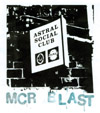 This might be heresy to some folk out there, but Neil Campbell’s work as Astral Social Club far outweighs that of anything done in his time with either the A-Band or Vibracathedral Orchestra. The floating membership of Campbell’s club is bolstered here by Arttu Partinen, a member of Finland’s brickheaded jamsters Avarus. One side of this lathe falls flailing but focused into the pit while the other still clings to the top rung of Jacob’s ladder.
This might be heresy to some folk out there, but Neil Campbell’s work as Astral Social Club far outweighs that of anything done in his time with either the A-Band or Vibracathedral Orchestra. The floating membership of Campbell’s club is bolstered here by Arttu Partinen, a member of Finland’s brickheaded jamsters Avarus. One side of this lathe falls flailing but focused into the pit while the other still clings to the top rung of Jacob’s ladder.
The opener, "MCR Blast One", begins as a knotty wash of competing drones and vocal wails smashed into with Mascis/Young riffs. On this release, Astral Social Club manage to force a river-dredged rainbow release through a tiny funnel letting it explode out the other end. A swooping choir of Neil Campbells fills the mid-range of this cut, the top end exploded out by spaceships with busted taillights, ripping open the air. The homemade / primitive nature of their sound never short-changes the listener with straightforward noise or improv clichés.
Like a great brass coloured circling ring “MCR Blast Two” swirls around and sinks further into itself loop after loop. Feedback seagull cries are interleaved through the mashed swooning raga and patterns of wooden percussion patterns. Counter melodies like snake charmer riffs come through like excerpts from the Radio Nepal series, except captured in a mancunian basement instead of a sweaty apartment. Eagles nest calls tear through the blustery weather of layers and chimes to create an electric sprawl of sounds.
samples:
Read More
- Administrator
- Albums and Singles
 This reissue of Jeremy Schmidt’s album as Sinoia Caves is a nice homage to the analog synth pomp of '70s prog and psychedelica, from the music right down to the fonts used on the sleeve. The music is excellent but The Enchanter Persuaded isn’t intended as a manual in how to shake things up using a synthesiser; it’s a straight up tribute to synths as how they used to be played.
This reissue of Jeremy Schmidt’s album as Sinoia Caves is a nice homage to the analog synth pomp of '70s prog and psychedelica, from the music right down to the fonts used on the sleeve. The music is excellent but The Enchanter Persuaded isn’t intended as a manual in how to shake things up using a synthesiser; it’s a straight up tribute to synths as how they used to be played.
Brah
The otherworldly “Dwarf Reaching the Arch Wonder” sounds like the celestial atmospheres of Hawkwind or Acid Mothers Temple stripped of everything bar the synths. Washes of synthesiser swim around the room, gentle drones and tinkling chimes color the piece further. It is very dated sounding but that isn’t a problem because it is so damn good. It slowly builds up and up like it’s moving outwards and upwards through the heavens, the album could finish after this one piece and I’d be happy (and putting the track on repeat).
Luckily the rest of The Enchanter Persuaded is of a similarly great caliber. Schmidt doesn’t stick to the same formula but moves around some classic synthesiser styles, exploring the versatility of the analog synth. “Through the Valley” has elements of Mogwai and Kraftwerk with its slow, interlocking melodies and vocoder laced vocals. The pieces all are elegantly simple, allowing the synthesisers to breathe and using other instruments and voices sparingly to highlight the beauty of a good synth. Schmidt shows that he is highly proficient at using a synth but doesn’t show off with Rick Wakeman style keyboard histrionics. The album climaxes with the epic “Sundown in the New Arcades (Milky Way Echo)” which revisits the interstellar enormity of the opening track. Sounds like strange animals calling across vast distances make the piece disconcerting and unsettling, it is like there is something on the other side of the speakers trying to get out.
The Enchanter Persuaded sounds like a lost classic by some synthesiser obsessed eccentric from 1973. It is a fantastic piece of work and it definitely deserves this reissue to get it to a wider audience. Although it is a shame this was released on CD, I think a vinyl only release would have really suited the aesthetic of the album. At least the CD will survive more wear and tear from the repeated plays that I plan to give it.
samples:
Read More
- Administrator
- Albums and Singles
Recently freed up from the tyranny of AOL Time Warner Elektra, Stereolab have seized the opportunity to get some things off their chest. Oscillations from the Anti-Sun, the compilation issued in the beginning of the year is perhaps one of the most generous single-artist collections ever, featuring all the band's music videos and a number of odd other video appearances on one DVD along with three CDs of music from out of print singles and stickers featuring replicas of the original covers.
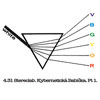 Now that everybody can be just about caught up, it's new single time. The first of the trio features two versions of the same song. "Kybernetická Babička" is peppy and bright, but the surrealistic lyrics of Laetitia Sadier is replaced by a bunch of "ahhh"s. While it is pleasant, it is rather forgettable and almost unnecessary to have two sides of nearly the same thing. Perhaps they're saving it for another car commercial or film soundtrack, but I have been far more impressed with other Stereolab instrumental grooves in the past.
Now that everybody can be just about caught up, it's new single time. The first of the trio features two versions of the same song. "Kybernetická Babička" is peppy and bright, but the surrealistic lyrics of Laetitia Sadier is replaced by a bunch of "ahhh"s. While it is pleasant, it is rather forgettable and almost unnecessary to have two sides of nearly the same thing. Perhaps they're saving it for another car commercial or film soundtrack, but I have been far more impressed with other Stereolab instrumental grooves in the past.
 The second single is perhaps the most enjoyable, at least for me anyhow. "Plastic Mile"starts off in an almost uneasy way but two minutes in, the entire song shifts and transforms into full-form Stereolab bliss mode. Swrling keyboard and guitar melodies are backed by a classy brass sound, sprinkled with Sadier's vocals providing both melody and harmony. Similarly, "I Was a Sunny Rainphase" opens with a strongly established upbeat melody and makes a big detour as well.
The second single is perhaps the most enjoyable, at least for me anyhow. "Plastic Mile"starts off in an almost uneasy way but two minutes in, the entire song shifts and transforms into full-form Stereolab bliss mode. Swrling keyboard and guitar melodies are backed by a classy brass sound, sprinkled with Sadier's vocals providing both melody and harmony. Similarly, "I Was a Sunny Rainphase" opens with a strongly established upbeat melody and makes a big detour as well.
 The third single is more along the lines of the retro-pop Stereolab have tried before, with a driving Phil Spector influenced pulse, bouncy basslines and socially optimistic lyrics ("we can learn to respect each other") on "Interlock.""Visionary Roadmaps" on the flipside is equally paced and also as enjoyable, but with an '80s-esque pick-struck bassline that isn't common for the group. The duality is familiar territory when it, like the songs on the second single, shifts into a completely different song for the last minute or so.
The third single is more along the lines of the retro-pop Stereolab have tried before, with a driving Phil Spector influenced pulse, bouncy basslines and socially optimistic lyrics ("we can learn to respect each other") on "Interlock.""Visionary Roadmaps" on the flipside is equally paced and also as enjoyable, but with an '80s-esque pick-struck bassline that isn't common for the group. The duality is familiar territory when it, like the songs on the second single, shifts into a completely different song for the last minute or so.
All three singles are delightful and a very cool thing for the fans to be buzzing over. Additionally, vinyl singles command a certain attention because when the approximate five minutes are done, they need to be flipped over. If these singles are slight detours from the album then I eagerly await the band's next record, probably far more excitedly than I have in recent years.
samples:
Read More
- Administrator
- Albums and Singles
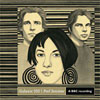 Peel Sessions releases have classically served a purpose only for thecollectors or die-hard fans but I can safely say that this release isan essential key to anybody's Galaxie 500 collection and should not be missed.
Peel Sessions releases have classically served a purpose only for thecollectors or die-hard fans but I can safely say that this release isan essential key to anybody's Galaxie 500 collection and should not be missed.20|20|20/Ba Da Bing!
I'm not trying to make an enemy of anybody in this review but I have to be completely honest with my feelings.
First off: Kramer's production can't hold a candle to the fantastic jobthe BBC engineers did in capturing Galaxie 500 live in thestudio. The band here sound much more like seasoned veterans thanon the original Rough Trade albums. The instrumets areappropriatelytreated, spaced, and the band seems far more comfortable with theirinstruments and comfortable with each other rather than thesometimes awkward and distant sounds and borderline clumsy productionof the albums. The charm isn't lost, however, which bringsme to my second point. Although every member of Galaxie 500 I havemet have been the sweetest, nicest people, nobody's post-Galaxie 500project has the charm, magic, or relevance that Galaxie 500 hadtogether.
Out of eight songs contained, four are cover tunes: Sex Pistols'"Submission," Young Marble Giants' "Final Day," Buffy Saint Marie's"Moonshot," and their classic show ending "Don't Let Our Youth Go toWaste," originally by fellow Bostonian indie rock legends, Jonathan Richman/ModernLovers.
Recorded at two sessions in 1989 and 1990, this release is a fantasticdocument of how well they could actually play together, and not someinappropriately romanticized notions of a young band faced with thechallenges of evolution and improvement. Dean's guitarbreaks, Naomi's melodic bass lines, and Damon's drum fills on a songlike "Flowers" is all the evidence needed to know that there wassomething special going on, and that the band seemed to perfect theirsongsafter recording them in the studio, once they were on the road.
With all due respect to James Murphy, "I was there," being fortunate tohave seen Galaxie 500 before they split. While I am still in lovewith their music I can accept that they remain in the past: I'm notlistening to unearthed gems like this and the double DVD anxiouslyawaiting a reunion tour.
samples:
Read More
- Administrator
- Albums and Singles
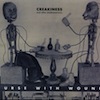 This strange mix of early '90s work and more recent material, showcases some of the many moods of Steve Stapleton. Classic cut-and-paste insanity from Nurse With Wound’s middle period has been paired with some of Stapleton’s powerful ambient vocal pieces from the last few years. This compilation does not make much sense on paper and perhaps is a little misguided in terms of its scope but it does sound brilliant from every angle.
This strange mix of early '90s work and more recent material, showcases some of the many moods of Steve Stapleton. Classic cut-and-paste insanity from Nurse With Wound’s middle period has been paired with some of Stapleton’s powerful ambient vocal pieces from the last few years. This compilation does not make much sense on paper and perhaps is a little misguided in terms of its scope but it does sound brilliant from every angle.
Considering Creakiness was originally a split with the group Spasm, it would have been nice to have the original split LP back in print especially considering the Spasm side was produced by Stapleton. Regrettably the Spasm material has been left off this collection and only the Nurse With Wound material is included (and the NWW side has been in print since the split LP on Sugar Fish Drink). It would be great if there were plans to reissue Spasm’s contribution along with their Meating Disorder EP if anyone out there is reading this who can make it happen.
However, regarding the material that is actually on this disc, "Creakiness" is a classic piece of Nursey collage work that does deserve the reissue. Disorientating ambience gives way to a whirlwind of Looney Tunes sound effects such as Roadrunner and Porky Pig. While this oddness is entertaining on its own, it’s when Stapleton takes the chaotic mass of sound and suddenly loops what sounds a pinball machine to form a terrific beat. It is possible to hear how Stapleton would work this hard rhythmic structure onto his next work, 1992’s Thunder Perfect Mind. "Creakiness" is a lot more forgiving than Thunder Perfect Mind, combining the whimsical with the rigorously alienating.
Strangely, the rest of the compilation jumps forward over ten years in time to cover material from mid-2000s, in particular recordings from the Echo Poeme Sequence sessions. However, the Echo Poeme Sequence pieces are strangely incomplete; why parts one and three are included but not complemented with part two (which altogether would have made a great release on its own) is beyond me. That said, the parts included here are the most difficult to find (one was a limited edition 7" and the other was a free CD-R given to members of the audience of the Salt Marie Celeste shows in Vienna) so at least there is some sense to including them on this compilation.
My main criticism of the two parts of "Sand Tangled Women" (the third in the Echo Poeme Sequence) still stands; the pieces develop nicely to a point but I feel they end prematurely and leave the pieces in limbo. Yet this release is a major improvement over the 7" in that the music here sounds perfect. The original 7" pressing was awful, pressing problems had persisted throughout its production and the final product was adequate at best. "Little Dipper Minus Two" on the other hand, remains one of Stapleton’s modern classics. The piece develops beautifully over time and spreads its tendrils like a dream in a sleeping mind. The two female voices which seem to be both addressing each other and no one bring to mind the washer women of Finnegans Wake who respectively turn into a stone and a tree. That same illogical logic is at play here, human forms drifting into matters and matter beyond the norm as their voices warp into resonances à la Alvin Lucier.
The compilation finishes with one of the two tracks from the Having Fun with the Prince of Darkness 7" from 2004. "A Perfectly Natural Explanation" (originally "…Expectation" on the 7") was originally paired with a remix of "Penis Fruit Loop" but that remix has been omitted. While "A Perfectly Natural Explanation" is good but does not really fit, it veers closest to "Creakiness" but not sufficiently so for it to feel like anything apart from filler (although that’s easy to say when I already own the single).
On one hand, the music is great and deserving of a reissue. On the other, the track listing is bizarre and I feel that perhaps an expanded reissue of the Sugar Fish Drink compilation and an Echo Poeme Sequence box set would be more apt. However, it’s not in Stapleton’s modus operandi to conform to expectations so perhaps this compilation is as much of a Nurse With Wound statement as the sonic material itself.
samples:
 
Read More
- Administrator
- Albums and Singles
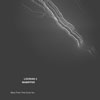 On a stop at Steve Albini's famed Electrical Audio studios during a recent joint tour, the Washington state husband and wife duo recorded this collaboration with Chicago’s noise/metal trio, later mixed by Randall Dunn. The result is a dark, yet captivating set of tracks that brings in bits of drone, black metal, post-rock, and gentle piano passages, bearing the mark of both but sounding entirely unique.
On a stop at Steve Albini's famed Electrical Audio studios during a recent joint tour, the Washington state husband and wife duo recorded this collaboration with Chicago’s noise/metal trio, later mixed by Randall Dunn. The result is a dark, yet captivating set of tracks that brings in bits of drone, black metal, post-rock, and gentle piano passages, bearing the mark of both but sounding entirely unique.
Sige/Utech/Land of Decay/Profound Lore
Locrian, the trio of Terence Hannum (synths/vocals), Andre Foisy (guitar) and Steven Hess (drums) are joined here by Mamiffer, the duo of Faith Coloccia and Isis/Greymachine’s Aaron Turner.With both projects working in different, but similarly metal-influenced experimental direction, the collaboration makes perfect sense.
Bless Them That Curse You is bookended by two dramatic, genre spanning pieces that open and go out with a bang."In Fulminic Blaze" opens with bellowing, Tibetan monk vocal drones and squealing abstract noises to harrowing effect, before being uprooted by a duet of acoustic guitar and piano, to which Steven Hess' measured, understated drumming slides in.The noisier material from early on reappears and melds in perfectly, further fleshing out the already complex sound.Towards the end it’s switched over to electric guitar to excellent effect.
The closing piece, the near-20 minute suite of "Metis/Amaranthine/The Emperor" leads off with subtle piano and gentle vocals courtesy of Coloccia, eventually with added guitar and textural keyboard layers.The mood goes from melancholy to bleak and sinister about a third of the way through, with the piano and vocals eventually overtaken by layers of noise and distant, unidentifiable howling.
The darkness hinted at erupts violently when Foisy's rapid, black metal tinged guitar slides in over militaristic drums that seem to herald armies marching toward an imminent apocalypse.Dissolving into pure noise, eventually the drums transform into a more traditional rock structure, with Turner taking over vocals in a violent, guttural outburst, before wrapping the album up with quiet feedback.
Between theses monolithic slabs lies a series of more restrained and moody ambient pieces.The title track goes more of a film score route, with complex layers of drifting ambience and droning synth, pushing in a more restrained, but still drama-laden direction.Both "Corpus Luteum" and "Lechatelierite" bear the Mamiffer sound more so than the others, being primarily lead by Coloccia's piano and accompanied by noisy, dissonant textures.Conversely, "Second Burial" feels more Locrian-esque, with abstract fuzz and digital treatments atop slow, lurching drones.
These two artists were a natural fit, given that they both accompany that gray area between drone, metal and post-rock, and both also work extremely well with sparser, understated sounds.While the opening and closing moments here are bombastic and pummeling at times, between the two lie a lot of hazy, ambiguous spaces that reveal more with each listen.
In an unconventional move in this day and age, Bless Them That Curse You is released on the three major formats, LP, CD and cassette.While each feature the same music, the presentation differs, from the gatefold deluxe double LP to the deluxe digipakCD to the oversized boxed tape, complete with stickers and hand-sewn booklet.Regardless of preferred format, any of them will capture the scope and drama of this work better than any downloadable format, so everyone's covered.
samples:
 
Read More
- Administrator
- Albums and Singles
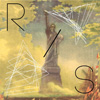 Peter Rehberg and Marcus Schmickler make a perplexing and contradictory duo. Take their computers away from them and their differences, both in theory and in practice, become clear. Perhaps because of these differences, Peter and Marcus have produced just two records together: 2007’s One (Snow Mud Rain), released by Erstwhile, and USA, a live recording released by Pan in 2011. Composed entirely of high intensity, tuneless noise, USA offers no explanation for its rationale or structure, or whether it has either to begin with, which leaves only the quality of the sounds to speak for themselves.
Peter Rehberg and Marcus Schmickler make a perplexing and contradictory duo. Take their computers away from them and their differences, both in theory and in practice, become clear. Perhaps because of these differences, Peter and Marcus have produced just two records together: 2007’s One (Snow Mud Rain), released by Erstwhile, and USA, a live recording released by Pan in 2011. Composed entirely of high intensity, tuneless noise, USA offers no explanation for its rationale or structure, or whether it has either to begin with, which leaves only the quality of the sounds to speak for themselves.
In interviews, Peter Rehberg describes what he does in mostly non-musical terms. Rather than make music, Peter claims he recycles audio. It’s not an easy distinction, but it helps to explain why his music sounds the way it does. His performances are defined by the technology that he chooses to use, which is frequently outdated, and the forms of his pieces are shaped by the way he manipulates samples and chops up sound. Marcus Schmickler, on the other hand, works from concepts, and in interviews he uses more conventionally musical terms, like pitch and counterpoint, to describe his work. As able with classical instruments as he is with synthesis and computer noise, Schmickler’s solo work almost always bears evidence of his musical thinking, whether he’s composing or improvising. But, pinning him down is notoriously difficult, and his collaborative projects are wildly varied. Were it not for his name on the cover, there would be no way I could connect him to albums as diverse as Variety, with John Tilbury, and Rabbit Run, with Keith Rowe and Thomas Lehn.
USA continues that confounding streak. Recorded in 2009 in New York City and Chicago, each of the three featured pieces is a barely controlled eruption of improvised digital tumult. The liner notes refer to the pieces as "real time extreme music improvisations," but they're more like walls of noise. Skip to a random part of any of the performances and there will be crunchy computer audio being torn apart and reconfigured as asymmetric rhythms, squealing synthetic fragments, and waves of unstable tonality. Structure, form, pitch, duration, and everything else are so smeared that they’re made secondary to the color and quality of the noises used. R/S layer those noises into textured patterns, if they can be called that, until the textures become so intense they subsume everything else. The effect is overwhelming at first, but with time the ears adjust and the music snaps into focus. The textures don’t become less abrasive, necessarily, but they do become easier to discern.
Listening to USA the first dozen times, I was convinced that Peter Rehberg had taken the lead on his American tour with Marcus Schmickler and effectively silenced Marcus in the process, but now I’m not sure. In places, I think I hear Marcus patiently matching Peter’s barrage of garbage audio with long synthetic tones and chunks of digital chatter. Trying to match Rehberg’s onslaught would have been pointless, anyway. Instead, Marcus finds a way to compliment it.
samples:
 
Read More
 Great rock 'n' roll bands can be deceptively hard to find. There's too often an empty gap between the dime-a-dozen bands playing to alt-rock radio, punk/hardcore traditionalism, and the toothless, blog-hyped indie scene. Thankfully, The Men exist outside all of those spheres as one of the finest rock bands around.
Great rock 'n' roll bands can be deceptively hard to find. There's too often an empty gap between the dime-a-dozen bands playing to alt-rock radio, punk/hardcore traditionalism, and the toothless, blog-hyped indie scene. Thankfully, The Men exist outside all of those spheres as one of the finest rock bands around.
- Administrator
- Albums and Singles
 Great rock 'n' roll bands can be deceptively hard to find. There's too often an empty gap between the dime-a-dozen bands playing to alt-rock radio, punk/hardcore traditionalism, and the toothless, blog-hyped indie scene. Thankfully, The Men exist outside all of those spheres as one of the finest rock bands around.
Great rock 'n' roll bands can be deceptively hard to find. There's too often an empty gap between the dime-a-dozen bands playing to alt-rock radio, punk/hardcore traditionalism, and the toothless, blog-hyped indie scene. Thankfully, The Men exist outside all of those spheres as one of the finest rock bands around.
When I think about the music I anticipate, enjoy, and latch onto in terms of categorization, good ol' fashioned rock 'n' roll often gets a raw deal. In 2012 alone, the past few months, I've spent a good deal of time spinning Eyvind Kang's modern classical suite, The Narrow Garden; Oren Ambarchi's abstract monument, Audience of One; Lindstrøm's flawed but enjoyable (and danceable) Six Cups of Rebel; and Windy and Carl's immersive We Will Always Be. Bands I enjoy that perform with "rock" instruments are usually after something more sophisticated than adrenaline, raw energy, and righteous emotion, like Earth's cello-augmented drone, Alcest's shoegaze-meets-black-metal wall of bliss, or Bardo Pond's long-form psych improvisations. It's a rarity when I come across a traditional rock band that is more than the sum of its influences, able to hold my attention for longer than a catchy single or two. Right now, The Men are that band.
Last year's Leave Home is essentially, for myself and many listeners, The Men's first full-length album (2010's vinyl-only Immaculada was slept on). It ended up perhaps the year's best rock album—a noisy ball of energy, as much guitar scrape and scrawl as actual songcraft that succeeded primarily on account of capturing their rapturous live approach on record. Open Your Heart is their second album for Brookyln's finely curated Sacred Bones label. It is far more accessible than their past work, though not on a broadly commercial level (like, say, Madonna's 1986 number-one single of the same name). As a step forward, with greater emphasis on songwriting, melody, and sheer genre-hopping variety, it succeeds admirably.
Open Your Heart stands as an enjoyable record for a few reasons. First, its songwriting—with duties spread between all four members—has tightened up considerably. The title track is a fine example; to my ears, it's their catchiest and finest four minutes to date. The band's free-form noise and hardcore influences have been dialed back a fair amount, and the sequencing augments their transition into genre-hopping experiments. "Turn It Around" and "Animal" kick off the album with two barnstorming punk blasts before The Men dip their guitars into everything from instrumental, acid-fried country ("Country Song"—who'd have guessed it?) to Krautrock-influenced grooves ("Oscillation") to acoustic rock with steel-guitar accents ("Candy," which is just begging for radio play in between Neil Young and the Rolling Stones' "Angie").
If anything, Open Your Heart reminds me of Hüsker Dü's late '80s mindset, in which the band hopped between any and every genre in their record collection with disregard for punk traditionalism. The same no-rulebook approach guides The Men today, as they sequence the above-cited "Candy" into "Cube," a two-minute blast through fast-tempo drumming and shouting, then "Presence," which switches into Spacemen 3 tribute mode as the album's lengthiest song. By the time "Ex-Dreams" punctuates the record with three chords and an SST-worthy vocal melody, I'm spent, ready to take a break—just long enough to catch my breath before the next spin.
Samples:
Read More
- Administrator
- Albums and Singles
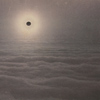 Way back in 1996, the duo of Thomas Köner and Andy Mellwig released this singles collection on the revered Chain Reaction label.  Over the ensuing years, it has justifiably been hailed as an inarguable dub techno classic, but it has remained maddeningly out-of-print for quite some time.  Now it is thankfully back again and it still sounds pretty amazing, which is a rather astonishing feat for cutting edge techno from almost two decades ago.  I'm a little disappointed that Type did not try to replicate (or outdo) the original, famously CD-damaging metal packaging though.
Way back in 1996, the duo of Thomas Köner and Andy Mellwig released this singles collection on the revered Chain Reaction label.  Over the ensuing years, it has justifiably been hailed as an inarguable dub techno classic, but it has remained maddeningly out-of-print for quite some time.  Now it is thankfully back again and it still sounds pretty amazing, which is a rather astonishing feat for cutting edge techno from almost two decades ago.  I'm a little disappointed that Type did not try to replicate (or outdo) the original, famously CD-damaging metal packaging though.
This is a fascinating album to try to deconstruct, as it often seems like a very abstract and boldly experimental effort that just happens to occasionally feature thumping four-on-the-floor beats.  I'm a bit conflicted on house beats in this instance, as I generally hate them with a fiery passion.  I definitely found myself annoyed by their blunt prominence in "Port of Call," but they are employed with tactful and ingenious restraint in most other instances.  In fact, the insistent pulsing is actually necessary to make music this uncompromisingly unmusical work.  This is most apparent in "Biokinetics 2," which closely resembles Köner's bleakly alienating and cavernous solo ambient work, but works a bit better due to its deep heart-like throb.  The genius of Biokinetics lies in how the beats sound, which is almost always distant and submerged.  In fact, the whole album sounds like it was recorded in a deep, dark trench in the ocean.  Or perhaps in a bubbling cauldron of molasses.  Those are both heartfelt compliments in this case, of course.
My clear favorite piece on the album is the tensely throbbing "Nautical Dub," which unleashes a very deep and insistently repeating bass line beneath a masterfully executed and shifting soundscape that sounds like a heavily processed rain storm mingled with stabs of hollow, ruined-sounding plonks.  I could listen to it forever.  There are a number of other pieces on Biokinetics that are more striking though, as Thomas and Andy took their music to some pretty outré places.
The most weird and dance-unfriendly of those pieces is probably "Biokinetics 1," which warps a synth bass line into a sick slow-motion burbling, dispenses with any kind of beat, and augments it only with a something that resembles a clanking, forlorn, pitch-shifted xylophone.  Then, later on the album, the duo spend two entire songs toying with a prominent rhythmic loop that constantly drifts in and out of phase with the very straightforward underlying beat: "Port of Nuba" sounds like a spirited ping-pong match unfolding over an otherwise bland, unremarkable bit of house music, then "Nautical Nuba" sounds like the exact same thing, but somehow underwater.
It is impossible to be unimpressed by the vision and singularity of Biokinetics, but it is a very difficult album to warm to or love in a non-cerebral way.  Its appeal lies primarily in how deftly and uniquely it uses minimalist repetition and studio technique to weave something wonderful out of the sparsest musical content.  "Nautical Dub" is brilliant, but none of the other pieces are quite on that level.  Some of them are pretty unusual, inventive, or ingeniously produced, but that is not quite the same thing as being great.
Also, there is an enormous amount of repetition here.  Within songs, I understand that that is largely the point: Köner and Mellwig were using obsessive repetition in service of achieving a cumulative slow-burning intensity.  Unfortunately, such intensity was not always the end result and some pieces drag a bit.  More significantly, however, Biokinetics is largely composed of song pairings: for example, "Port Gentil" and "Nautical Zone" are essentially two versions of the exact same piece of music (and make up 25 minutes of the album).  It is certainly neat and enlightening to hear how the duo transform their base materials, but it also means that Biokinetics only contains five or six real songs.  That said, it was never intended as a coherent album, so it is a bit unfair to find fault with that (even though that is how I experienced it)–the important thing is that Biokinetics compiles some truly innovative and inspired work that turned out to be far more timeless than anyone could have anticipated.
Samples:
 
Read More


